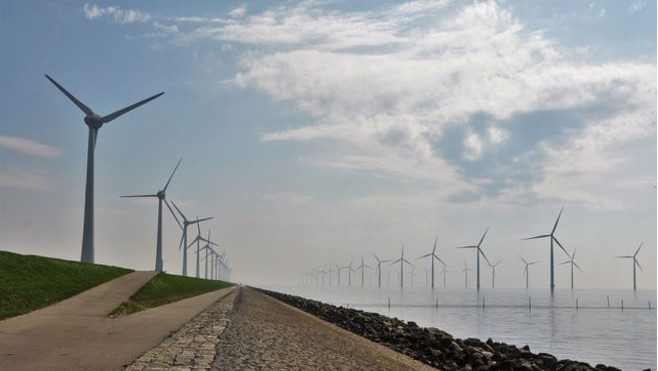

Dark clouds over Wind Energy
India’s wind energy sector will likely see a sluggish growth with regard to capacity addition over the next five years, Crisil Research said on Wednesday. The CRISIL Research report further explained that the shift to a competitive bidding mechanism has slowed industry growth as there is a significant fall in tariffs, triggering a decline in both bid response and profitability for original equipment manufacturers.
Read: CRISIL report or MNRE Minister. Who is right?
“Crisil Research expects capacity addition to grow slowly over the next five years, driven by the allotment of central transmission utility’s (CTU) grid connected capacities,” Crisil said in the report.
“The shift to a competitive bidding mechanism has slowed industry growth due to a significant fall in tariffs, triggering a decline in both bid response and profitability for original equipment manufacturers (OEMs).”
The shift to a competitive bidding mechanism in the wind energy sector has resulted in tariffs falling to ₹2.4-2.6 per unit, from ₹4-4.5 per unit under the feed-in tariff regime. According to Crisil, such low realisations are unviable for the entire value chain at current capital costs of ₹6.8-7.2 crore per MW.
[related_post]
It further predicts that capacity addition is expected to rise by 14 to 16 GW over fiscal 2019 to 2023, entailing investments of Rs 1,10,000 cr. Capacity additions will primarily be driven by central government allocations with relatively stronger counterparties like Solar Energy Corporation of India (SECI) and PTC, reducing risk as compared to direct exposure to state discoms, the statement said.
State auctioning, on the other hand, has slowed as several states have signed power supply agreements (PSAs) with PTC and SECI to procure wind power under the schemes auctioned by them, to help fulfil their non-solar renewable purchase obligations targets. Despite tendering and auctioning occurring in spurts through the fiscal, most of the capacity is expected to come online only between end-fiscal 2019 and fiscal 2021. Capacity pipelines are, therefore, bunched over these years with a weak outlook thereafter due to incremental challenges to execution.
The ratings agency a few days ago had slashed India’s Renewable target. It had revised its own estimate due to regulatory haze around policy support for renewables. It says that India will achieve installed solar power capacity of 70GW by March 2023, lowering its previous estimate of 79GW. Indian government which has set a target of 100GW of solar capacity by 2022 but has installed about 22GW till date.
1. The mandate for blending Compressed Biogas (CBG) with natural gas has come into effect…
Andhra Pradesh is striving towards greening its energy sector with quite some speed. In a…
With an objective to bolster India’s green energy goals, a Tripartite Agreement has been signed…
The Union MNRE Minister Pralhad Joshi launched the Green Hydrogen Certification Scheme of India (GHCI)…
India’s energy conglomerate Bharat Petroleum Corporation Limited (BPCL) has commissioned a 5MW green hydrogen plant…
In a historical development, the European Space Agency (ESA) has successfully launched its pioneering ‘Biomass’…